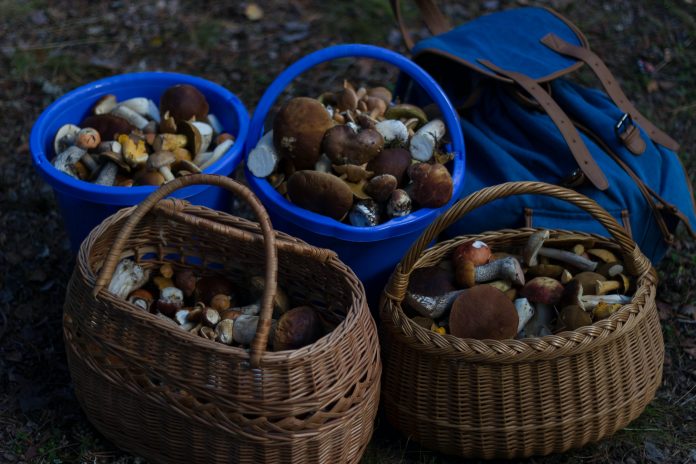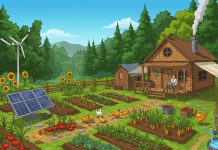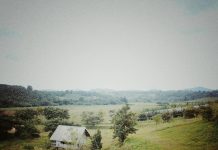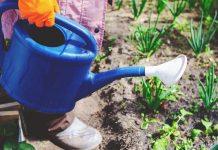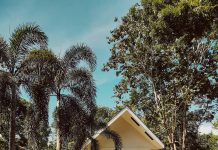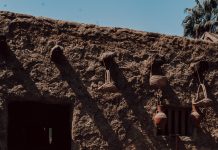Are you looking for a new challenge and the thrill of discovery? Have you ever considered foraging for wild edible mushrooms in your immediate surroundings? If so, then get ready to embark on an exciting journey!
Wild edible mushroom identification is a rewarding activity that can provide nutritious and delicious meals but must be done with care. In this blog post, we will cover tips and techniques for safely identifying mushrooms to ensure a successful – not to mention safe – culinary adventure.
So if this sounds like something up your alley then grab your basket, it’s time to go hunting!
Overview of the Basics of Mushroom Identification
If you’re ready to embark on a thrilling adventure in the world of fungi, then look no further than learning the basics of mushroom identification. From the telltale shape of the cap to the unique gill formation underneath, there are a few key characteristics to keep an eye out for when identifying mushrooms.
With a little bit of patience and some keen observation skills, you’ll be able to differentiate between edible and poisonous mushrooms with ease.
Whether you’re foraging for a new culinary delight or simply want to learn more about the fascinating world of fungi, mastering the art of mushroom identification is a must for any adventurous nature lover.
What to Look for When Trying to Identify Wild Edible Mushrooms
When it comes to foraging for wild edible mushrooms, the excitement of discovering a tasty treat can be overshadowed by the fear of accidentally picking a poisonous mushroom. Thankfully, there are a few key characteristics to look out for when trying to identify safe-to-eat mushrooms.
First, examine the color, texture, and shape of the cap and stem. Pay attention to the gills or pores underneath the cap, as well as any odor or staining. It’s also important to research the specific types of mushrooms that grow in your area and to always err on the side of caution.
With a bit of knowledge and careful observation, you’ll be able to confidently add wild mushrooms to your foraging repertoire. Happy hunting!
Common Characteristics of Edible Mushrooms
If you’re a fan of mushrooms, it’s no secret that they come in all shapes, sizes, and colors, and not all of them are meant for consumption. However, for those who take the leap of faith into the world of edible mushrooms, there are a few common characteristics to look out for.
Firstly, they often have a fleshy stem and cap, and the cap can range from flat to bulbous. Another key characteristic is the presence of gills located under the cap, which produce and drop spores. Edible mushrooms also tend to have a mild, earthy flavor and a slightly chewy texture.
So, if you’re feeling adventurous and want to explore the culinary world of mushrooms, be sure to take note of these common characteristics to ensure a safe and enjoyable dining experience.
Tips and Techniques for Finding and Harvesting Wild Edible Mushrooms Safely
Foraging for wild edible mushrooms can be an exciting and rewarding adventure, but it’s important to proceed with caution. With the right knowledge and techniques, you can safely harvest these delicious delicacies without putting yourself at risk.
Firstly, familiarize yourself with the different types of mushrooms that grow in your local area and learn which ones are safe to eat. Next, invest in a good field guide and study it thoroughly. When foraging, always wear appropriate clothing and bring along a knife and basket for storage.
Avoid consuming any mushrooms that you are uncertain of, and cook all mushrooms thoroughly before eating. With these tips, you’ll be well-equipped to explore the vast and bountiful world of wild edible mushrooms while staying safe.
Resources to Help you Confidently Identify Wild Edible Mushrooms
If you’re someone who enjoys spending time in nature, something is thrilling about scouting for edible mushrooms. However, it’s important to note that not all mushrooms are safe to eat – in fact, some can be deadly.
That’s where resources to confidently identify wild edible mushrooms come in handy. Through books, websites, and apps, you can become more knowledgeable about which mushrooms are safe to eat and which to avoid.
With a little research and preparation, you can add a new level of excitement to your outdoor adventures while safely exploring the delicious world of wild edible mushrooms.
How to Handle a Misidentification, and what to Do if you Make a Mistake
Mistakes happen, it’s just a fact of life. But when it comes to misidentifying someone, the stakes can be higher. Not only can it be embarrassing, but it can also be hurtful. That’s why it’s important to learn how to handle misidentification with grace and humility.
First, take a moment to apologize and correct yourself. Don’t try to make excuses or downplay the mistake. Acknowledge it and move on. If you’re the one who made the mistake, take responsibility and apologize. Don’t beat yourself up too much, but do learn from the experience. Overall, the key is to be respectful and kind, even when you’re in the wrong. And remember, this is all part of the adventure we call life!
For those looking to venture into the world of wild mushroom foraging, it is important to remember that safety and caution come first. You should always make sure you have a firm understanding of how to properly identify edible mushrooms before attempting to harvest them. Once you have all of the information and resources necessary, approach mushroom hunting with enthusiasm and curiosity! After all, nothing can compare to the satisfaction of finding a delicious edible mushroom in the wild. With knowledge, caution, and resourcefulness, you can be sure your wild mushroom foraging experiences will be both rewarding and enjoyable. Take care to study mushrooms, know when and where to find them, then get out there and explore your local environment! With such diverse ecosystems nationwide, you never know what kind of mysterious fungi you may find lurking in the woods. Good luck with your foraging adventures!


